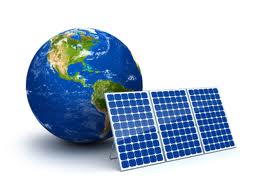Despite all the problems supposedly surrounding the solar PV sector – bankruptcies, oversupply, the phasing out of feed-in-tariffs and other incentives, government austerity packages and low economic growth – it is still expected to register strong growth this year.
According to US research firm Maxim Group, the solar PV sector is expected to grow around 18 per cent in 2013 to around 38GW. This follows a 23 per cent rise in 2012, and comes as major economies such as China, US, Japan, and India overcoming declines in recent leaders Germany and Italy, and because of new growth in other Asian countries, Latin America, Africa and the Middle East.
In particular, it points to South Africa, Ukraine, Poland, and Southeast Asia as the potential big movers “While off the radar, a few tertiary markets could be sleepers that surprise to the upside,” it says, noting South Africa’s renewable auction program, where 1GW has already been approved and has begun construction, Ukraine’s slow but steady growth, Poland splashing onto the scene late 2012, and a Thailand-led boom in SE Asia.
And, it says Latin America, rest of Africa, and the Middle East “have leapt out the gate” with aggressive targets that will yield multi- GW pipelines in Chile, Brazil, Saudi Arabia, Turkey, and Qatar.
The Maxim researchers have put together some interesting statistics of which countries lead the way in solar PV. It is interesting to note where we were just a few years ago, where we are now, and where we will be in a few years.
Australia sticks stubbornly to 8th place, even though the names of the countries around them are shuffled over the years. All these figures are for annual installations in a particular calendar year. They are not aggregate totals.
10 top solar countries in 2007
1. Germany 1328MW
2. Spain 542MW
3. Japan 211MW
4. USA 160MW
5. Italy 70MW
6. Korea 50MW
7. China 20MW
8. Australia 12MW
9. Portugal 11MW
10. Belgium 10MW
Total (for all countries) 2,826MW
10 top solar countries in 2012
1. Germany 7,630MW
2. China 4,950MW
3. Italy 4,223MW
4. USA 3,282MW
5. Japan 1,790MW
6. India 1,427MW
7. France 1,012MW
8. Australia 993MW
9. Bulgaria 933MW
10. UK 817MW
Total (for all countries) 32,340MW
Prediction for 10 top solar countries for 2014
1. China 10,640MW
2. USA 6,203MW
3. Japan 4,731MW
4. Germany 3,682MW
5. India 2,288MW
6. Italy 1,985MW
7. UK 1,856MW
8. Australia 1,401MW
9. Canada 1,319MW
10. Chile 895MW
Total predicted (for all countries) 46,301MW
And then comes some interesting other movers, with Thailand (709MW), South Africa (501MW), Korea (589MW), Mexico (685MW), Peru (484MW), and Brazil (488MW) beginning their push. Qatar (300MW and Saudi Arabia (225MW also begin to emerge as their ambitions programs start to be reflected in actual deployment.
In all, Maxim predicts that 30 countries will be installing 200MW or more of solar PV a year by 2014, up from just three in 2007. As UBS noted in its recent report, this is likely to have a major impact on utilities and energy markets – not just in Europe, but across the world.
Australia sticks stubbornly to 8th place in the rankings of top solar countries, even though the names of the countries around them are shuffled over the years. But the question is for how much longer. Australia’s installation is almost entirely rooftop solar PV on houses, but utility scale projects (1MW or more) are few and far between. Australia has less than 200MW in announced projects out to 2015, and this is dominated by AGL Energy’s 159MW Solar Flagship project.
By contrast, South Africa has 1,300MW of utility scale solar in the next two years, Chile has 2,814MW over the coming three years, Brazil has 1,441MW, and Mexico (840MW), Argentina (298MW), Peru (204MW), Ecuador (198MW) and even the Dominican Republic (270MW) have a bigger pipeline of utility scale projects than Australia. Hopefully, ARENA and the CEFC can help change that.








